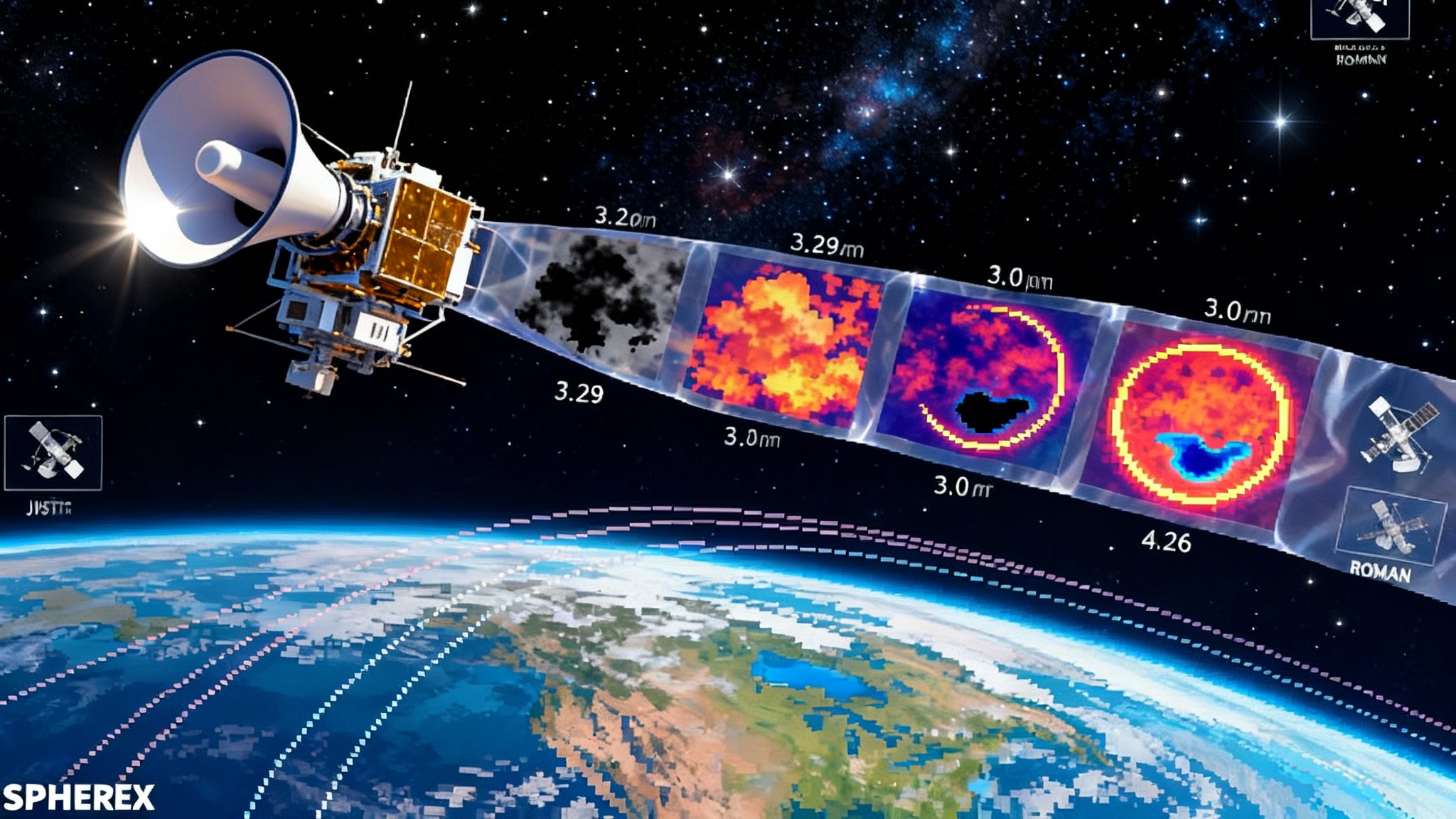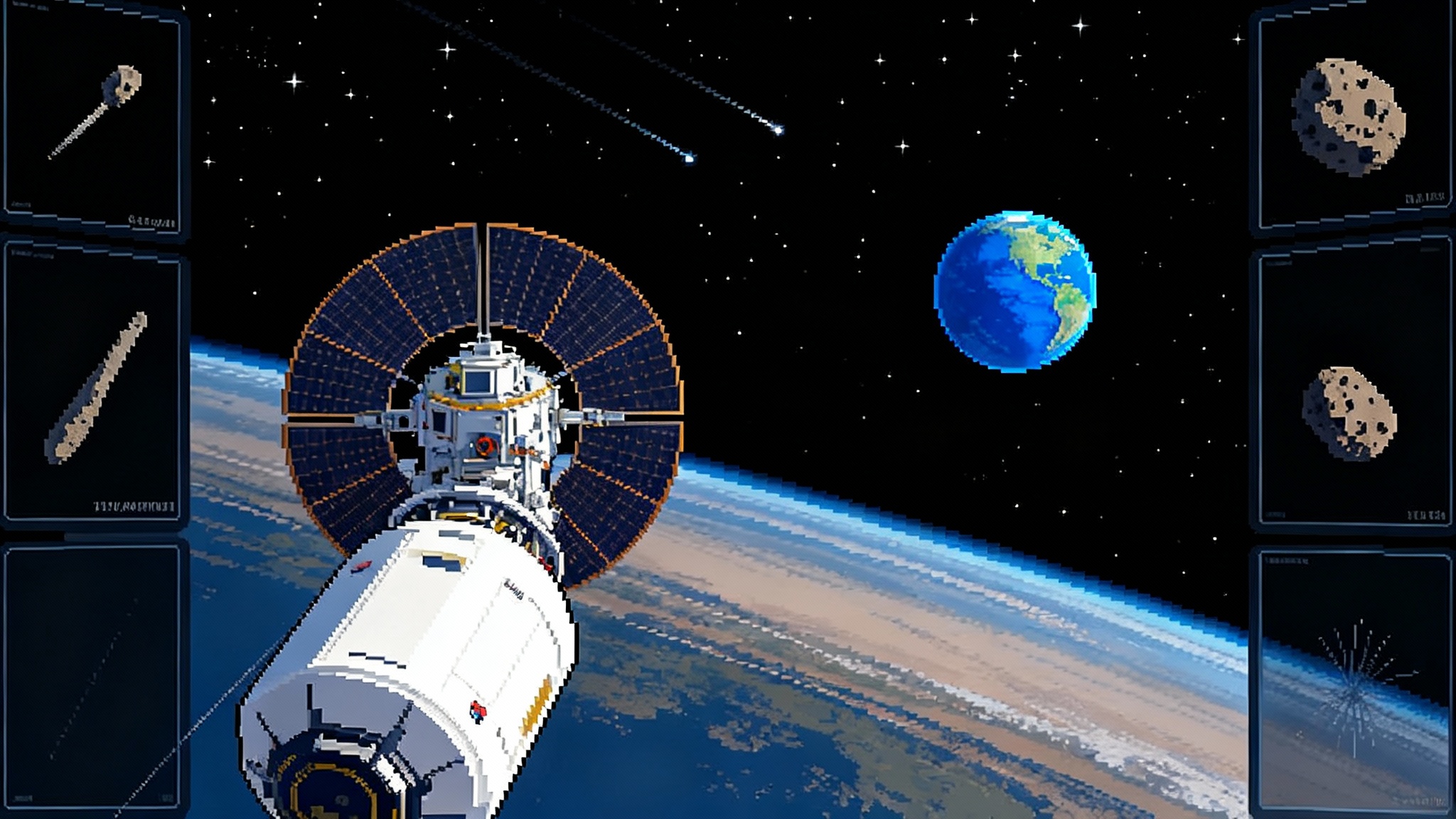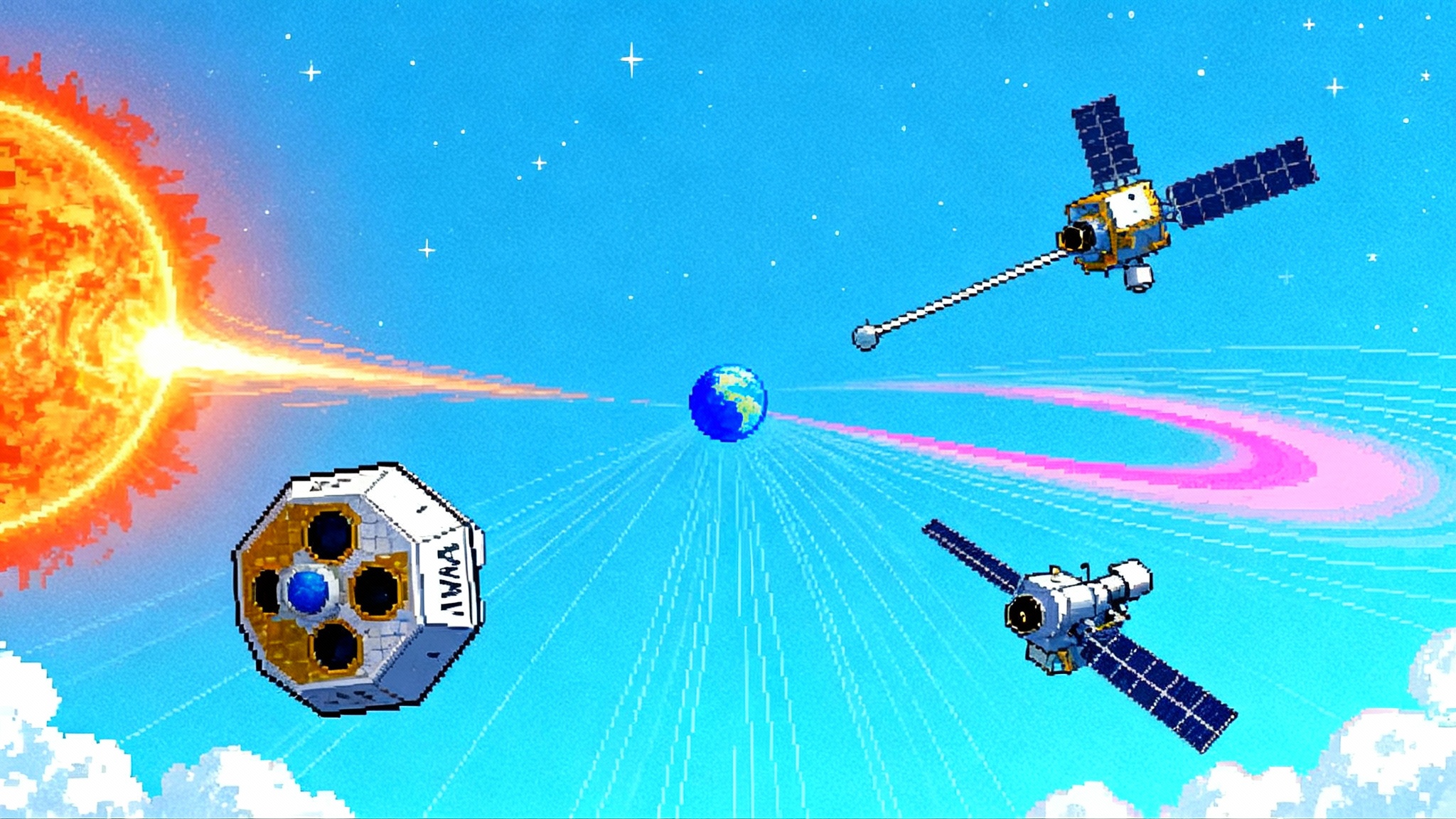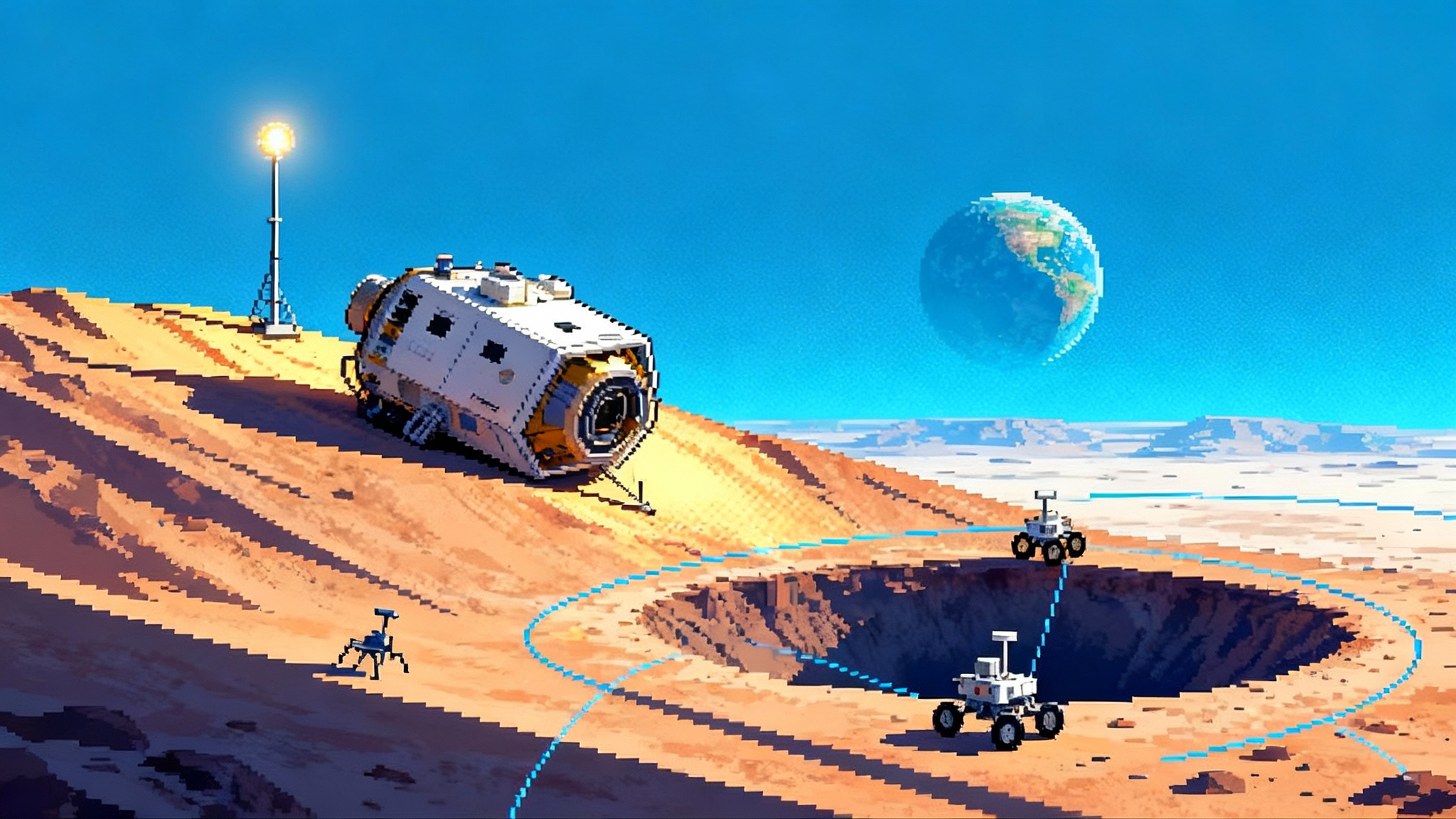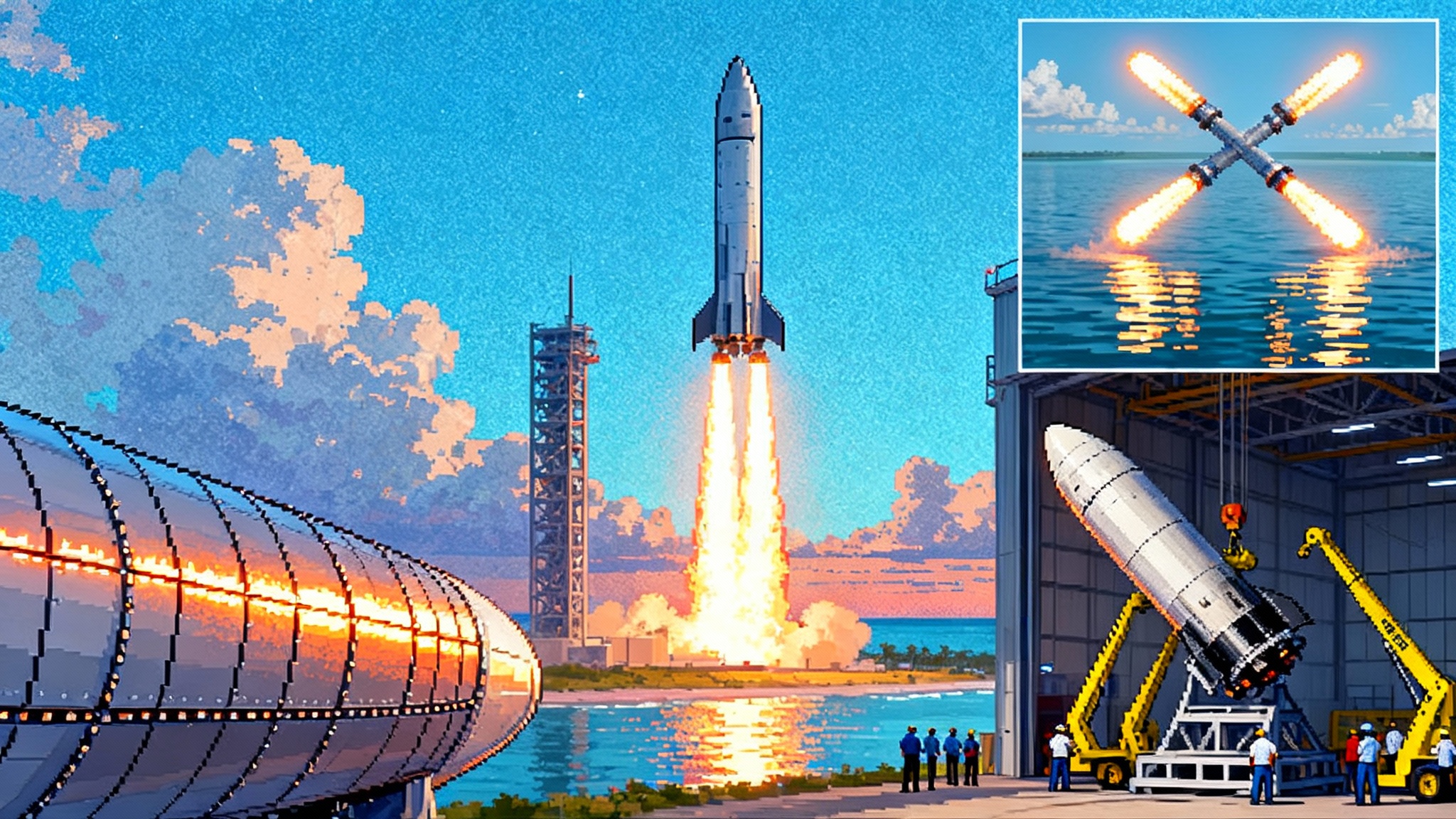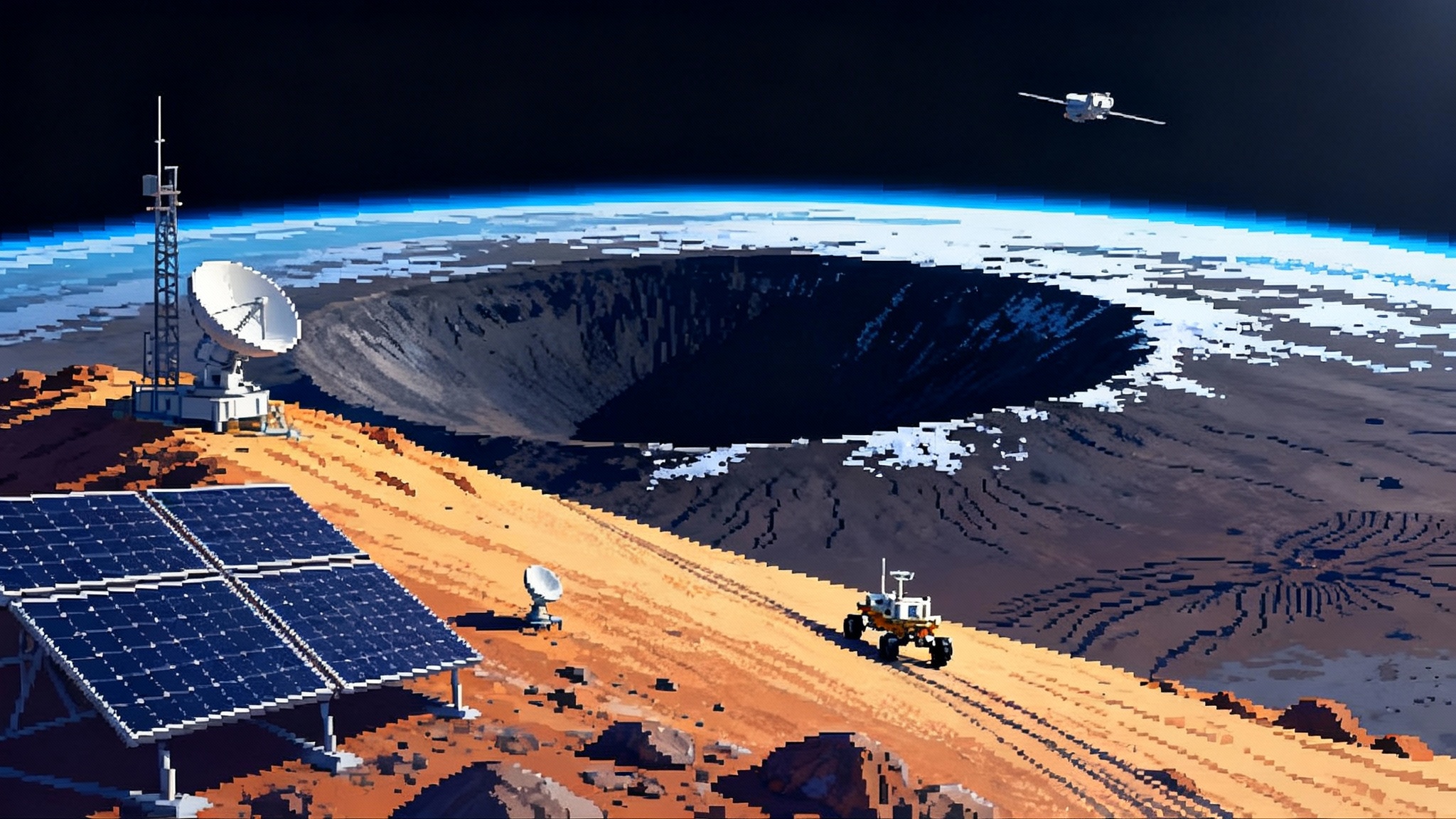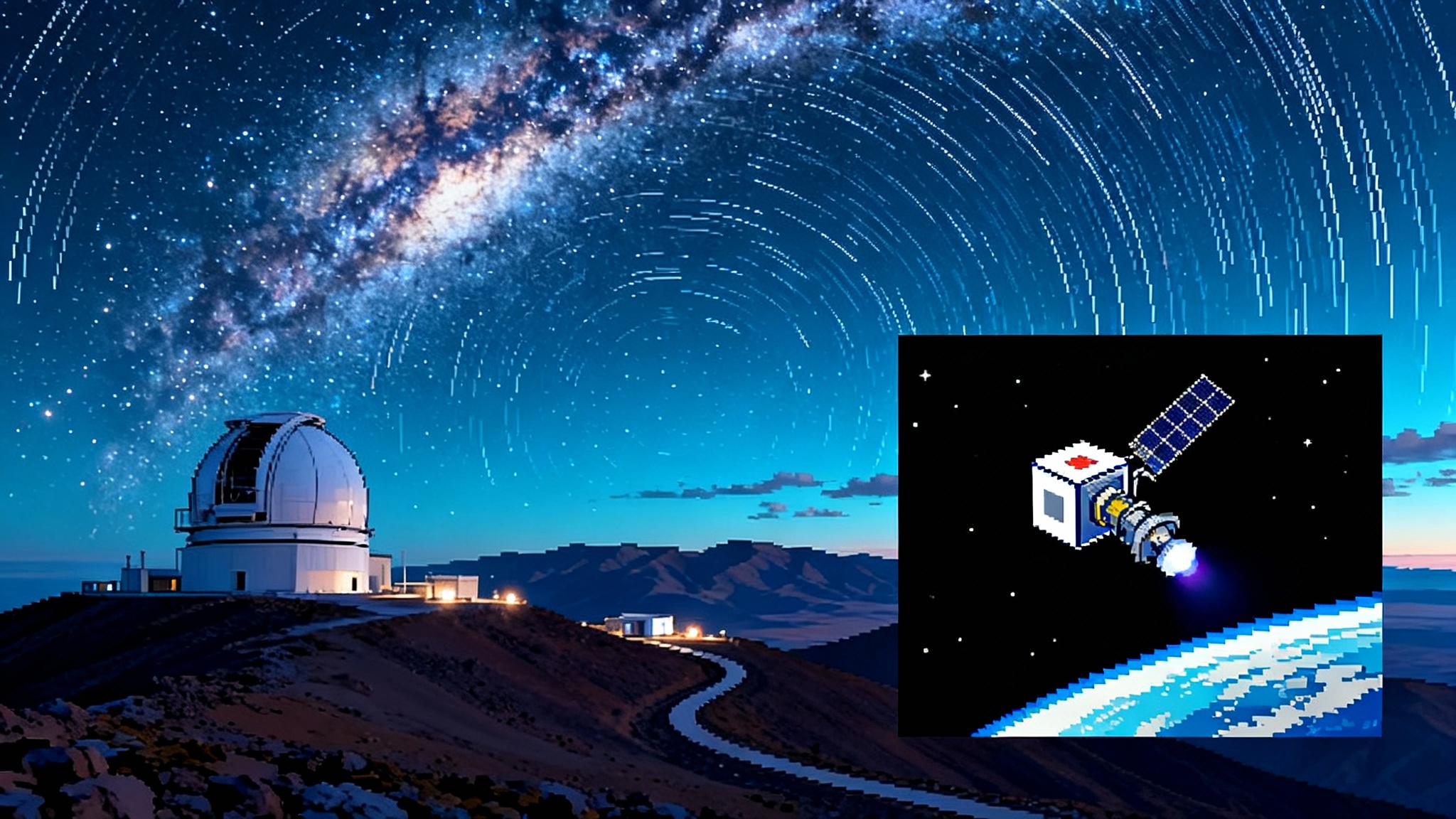3I/ATLAS is changing comets. Time to change ours
Observations of interstellar comet 3I/ATLAS revealed unexpected early water activity and a carbon dioxide dominated coma. Here is why that changes our assumptions about planet formation and how to build an always on response before the next visitor arrives.
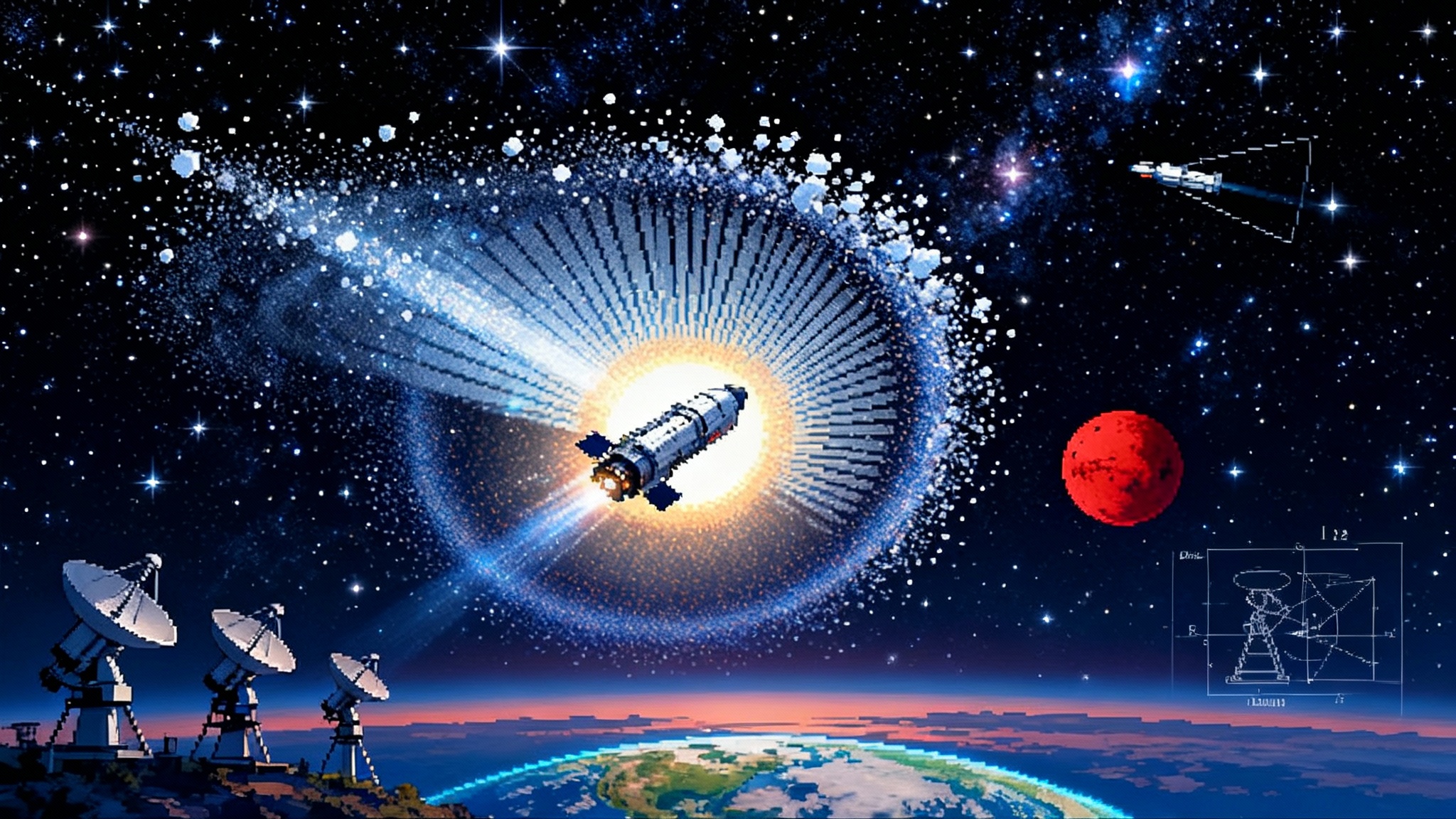
The comet that arrived early
In July and August 2025, astronomers pointed an ultraviolet sensitive space telescope at a faint, fast moving dot between Jupiter and Mars and saw something rare. The interstellar comet 3I/ATLAS was already releasing water at a surprising clip more than three times farther from the Sun than Earth is. A new analysis estimates roughly 40 kilograms of water per second, a rate you would associate with a city fire hydrant, not a comet adrift in cold space. The signal came from hydroxyl, created when sunlight breaks water apart, and it showed up months before most solar heated water activity is expected.
Water this far out is a puzzle. Think of a comet as a dirty snowball covered by its own windbreaker. Sunlight warms the surface, ices vaporize, and gas drags dust off the nucleus to make a fuzzy coma. That script usually starts closer to the Sun. 3I/ATLAS seems to be playing a different game. The simplest reading is that the coma includes large icy grains lofted from the surface earlier that now vaporize in sunlight, which explains why water appeared before the classic cyanide signature and why the activity looks extended rather than from a single hot spot.
The basics of the encounter frame the urgency. 3I/ATLAS will skim just inside Mars’s orbit around October 30, 2025, never coming closer to Earth than about 1.8 astronomical units. It will pass behind the Sun for Earth based observers in late October and reappear by early December. This interstellar traveler is a one pass guest. If observations are not made before it rounds the Sun, there is no second chance. For current context and geometry, see NASA's 3I/ATLAS overview.
Chemistry from another neighborhood
One month after the water surprise, the James Webb Space Telescope reported spectra showing a coma dominated by carbon dioxide, with a carbon dioxide to water ratio near eight to one. That value sits among the highest ever measured for a comet. It suggests either an intrinsically carbon dioxide rich nucleus or a surface where heat struggles to reach water ice beneath a veneer of carbon dioxide frost.
For orientation, the first interstellar interloper, 1I/'Oumuamua, behaved like a dry fragment that never produced a visible coma. The second, 2I/Borisov, was rich in carbon monoxide and looked more like a traditional comet arriving from the deep freeze. Now 3I/ATLAS is sending a different chemical telegram: water early, but a carbon dioxide dominated coma. A second observatory mapped an enormous carbon dioxide cloud and detected strong water ice absorption features, implying a halo of grains and gas that stretches hundreds of thousands of kilometers. The picture that emerges is a nucleus that formed in a colder, perhaps more irradiated region of its original planetary system, or a body that spent eons being altered by the interstellar background.
The clock problem we keep failing
Every interstellar visitor forces us to race a clock we have not optimized for. These objects are fast and faint at discovery, and they cross the inner solar system in months. Even if you find them early, the mechanics of mounting a spacecraft encounter are unforgiving. A trajectory analysis after the July 1 discovery of 3I/ATLAS showed that any late Earth departure aimed at a direct flyby would demand unrealistically high delta v. Launching from Mars in mid 2025 looked more feasible at roughly one fifth of that velocity change, but only if you already had a spacecraft there and a mission willing to surrender primary objectives to chase a target of opportunity. We did not.
The message is not that interception is impossible. It is that our infrastructure is not set up to capitalize on the few weeks when decisive action is possible. When the discovery pipeline, the time allocation pipeline for major telescopes, and the spacecraft pipeline all run on separate calendars, an interstellar visitor threads the gap and is gone.
What 3I/ATLAS tells us about planetary systems
The chemistry matters for more than a scoreboard of unusual ratios. Comets archive the temperature, radiation, and mixing history of the disks where planets form. Carbon dioxide rich ices point to formation near a different ice line than Earth’s comets. Early water activity driven by icy grains suggests that some interstellar comets are loosely bound aggregates that shed surface material easily. That has implications for planetesimal strength, for how pebbles grew into kilometer scale bodies around other stars, and for how volatile inventories were partitioned between gas and solids.
Each interstellar object we have seen has told a different story. 'Oumuamua tested our models of non gravitational accelerations with no detectable coma. Borisov looked like a classic comet with unusual carbon monoxide levels. 3I/ATLAS is writing a third chapter with water detected far out and a coma where carbon dioxide dominates. If you want to understand how common Earth like volatile inventories are across the galaxy, you need more than a few remote spectra. You need to fly through the coma, sample grains, and read the isotopes that record a body’s long journey.
An always on interstellar visitor response
We should treat 3I/ATLAS as the pivot. It is time to stand up a permanent interstellar visitor response across three fronts that work together.
1) Faster discovery to decision pipelines
- Make discovery data machine actionable within minutes. Shift to an automated path where tracklets, difference images, and uncertainty ellipses arrive in a standard schema that orbit solvers can ingest immediately. The goal is a 15 minute loop from detection to a first pass orbit and a confidence score for hyperbolic motion.
- Stand up a shared interstellar trigger tier. Give Rubin Observatory, ATLAS, ZTF, and Pan STARRS a common playbook for rapid follow ups and handoffs to larger apertures. See our look at Rubin Observatory real-time sky for why fast pipelines matter.
- Pre approve urgent target of opportunity windows. Hubble, Webb, ALMA, and large ground facilities should reserve a small but real fraction of time specifically for interstellar objects, with decisions inside a single workday.
- Publish open orbit updates and ephemerides on a cadence. A single dashboard should update every few hours with latest fits, error bars, and visibility windows for professional and citizen astronomers.
Concrete outcome: by the end of the next observing season, a candidate that meets a hyperbolic threshold automatically triggers a cross agency alert with an orbit solution, a rolling visibility plan, and pre filled target files for major instruments.
2) Global observing as one instrument
- Divide roles by what each facility does best. Use Webb for infrared spectroscopy of volatiles and ices, Hubble for ultraviolet tracers like hydroxyl, ALMA and NOEMA for carbon monoxide and rarer molecules, and large ground telescopes for nucleus sizing, dust colors, and high cadence photometry. Let SPHEREx mapping the sky cue deep follow up when extended gas comae appear.
- Treat Mars orbiters and rovers as opportunistic outposts. The 2025 geometry near Mars opens a narrow window for imagers and spectrometers already there to watch an interstellar comet from a different vantage point.
- Build a standing long baseline light curve network. A dozen small to mid size telescopes spread across longitudes can deliver continuous rotation coverage to catch jetting and fragmentation episodes.
- Standardize and share data products. Agree on formats, calibration steps, and quick look metrics so that, on the day an interstellar alert fires, everyone is speaking the same data language.
Concrete outcome: a rehearsal every year where the network targets a mock interstellar object for 72 hours, pushes data through the same pipelines, and scores the response.
3) Put an interceptor on the pad and another at L2
- Build on Europe’s lead. ESA and JAXA’s Comet Interceptor will launch to the Sun Earth L2 point and wait for a suitable long period or interstellar visitor before executing a high speed flyby with three coordinated spacecraft. See the Comet Interceptor factsheet for the mission concept.
- Stand up a U.S. counterpart. Field a ready to fly interceptor that complements Comet Interceptor, designed as a modular bus with a narrow angle camera, a mid infrared spectrometer, a dust analyzer, and a simple mass spectrometer. Keep it solar powered for inner solar system targets and pre qualify a radioisotope option for colder cases.
- Treat speed as a system property, not a thruster spec. Assets already at L2 or in Mars orbit can reach targets with much less propulsive effort. Park one interceptor at L2 and keep a second at high readiness on Earth with a pre negotiated rideshare slot. For operational context at libration points, see our piece on missions stationed at L1.
- Practice with long period comets. Do not wait for the next interstellar object to validate the playbook. Fly a rehearsal past a dynamically new long period comet to finalize approach geometries, instrument sequences, and autonomy.
Concrete outcome: a funded program line for an Interstellar Visitor Interceptor with two flight units, one stationed at L2 and one in storage, plus an annual readiness review tied to real sky drills.
What it takes to move now
- Procurement: pre compete the spacecraft bus and payloads so options are on the shelf, with fixed price blocks for core hardware and a small reserve for rapid instrument swaps.
- Launch: secure recurring rideshare opportunities to L2 orbits on vehicles with demonstrated cadence so you are not shopping for a rocket when the target appears.
- Software: unify alert ingestion and observation planning in open source tools that anyone can audit and extend.
- People: name a small joint tasking team across NASA, ESA, JAXA, and national observatories that can green light cross facility schedules the day a trigger fires, and publish the rules to avoid confusion.
- Drills: run a 48 hour alert exercise twice a year, grade everything, publish the after action report, and fix the slow steps.
Why the next time matters more than this time
3I/ATLAS has already justified the effort. The early water signal at large distance tells us that some interstellar comets carry ready made snow clouds. The carbon dioxide dominated coma shows that volatile inventories are not one size fits all. These two facts reshape how we talk about planet formation outside the Sun’s nursery and show how little we can squeeze from remote sensing alone when the clock is short and the object is faint.
If we had an interceptor idling at L2 this year, we could have planned a crossing of the coma in early October, sampled grains, and tied the water and carbon dioxide story together at the source. We did not, and we will not for this one. That is the point. The time to build the muscle is before the next hyperbolic speck appears.
The close and the charge
Interstellar visitors are not omens. They are couriers. Each one brings a sealed envelope from a star we have never seen up close. 3I/ATLAS handed us a note that reads: your assumptions are too narrow, your timing is too slow. The response is simple and hard at once. Collapse minutes in the data pipeline. Act like the world’s telescopes are a single machine. Put a flyby probe where it can sprint. Do these three things and when the next courier flashes through our neighborhood, we will not just watch it go. We will meet it head on, read the message at arm’s length, and answer with measurements rather than guesses.
